The furthest north you can fly on a commercial flight, Svalbard is so far above the Arctic Circle that it’s equidistant to the North Pole and the northernmost point of Northern Norway!
Since it’s known for its polar bears, the Svalbard archipelago conjures up icy images, but in reality, Svalbard is warmer than other places at similar latitudes like Canada and Russia due to the moderating influence of the Gulf Stream.
While winter in Svalbard is cold, it’s doable — and this advice is coming from a perpetually cold Californian with woeful circulation — you simply need to know how to dress.
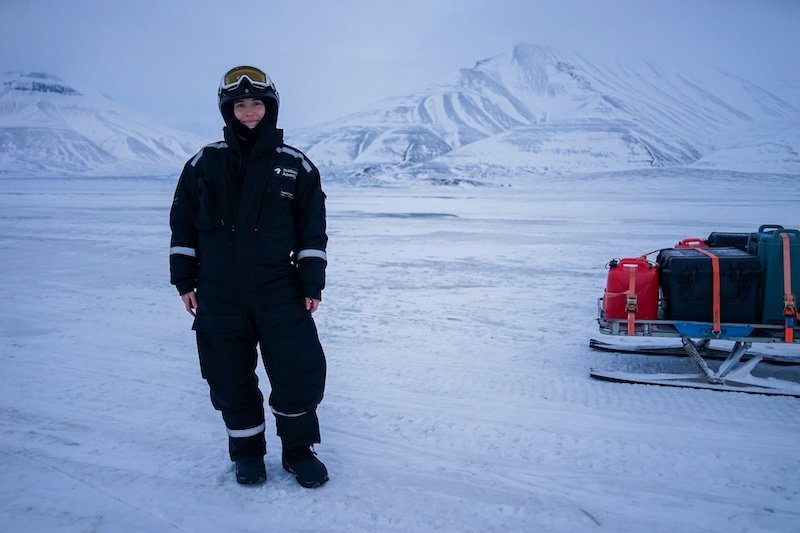
As the Norwegians say, there’s no such thing as bad weather, only bad clothing. And after much grumbling (and more importantly, learning to finally wear wool, despite my previous insistences that it’s too itchy), I’m here to say: I think they’re onto something.
This Svalbard packing list reflects what I brought (and a few things I wish I brought) from my winter trip to Svalbard in February 2024, which included a lot of outdoor activities on my itinerary, including an ice cave snowmobile trip, a winter photography hike, and snowmobiling in search of the Northern lights.
While much of what you want in winter and summer are the same, I’ve also adjusted the packing list slightly for a summer trip based on my friend’s Megan’s recommendations.
I visited Svalbard with her this past year, and she’s previously visited Svalbard in the summer several times, so I trust her recommendations!
Table of Contents
Quick Svalbard Packing Checklist

This blog post will explain the weather in Svalbard, including what temperatures to expect and what that means for what you should pack. It also goes into detail on specific products I recommend and why.
But maybe just don’t want to read all that — I’ve got you. Here’s a bullet point list of what I recommend, and if you want more detail and product recommendations, you can just scroll down and read further.
Winter Clothing:
- Warm outer layer (parka)
- Merino wool base layers
- Wool sweaters
- Waterproof pants
- Snow boots
- Wool socks
- Warm hat (beanie)
- Neck gaiter (or scarf or balaclava)
- Warm mittens
- Photography gloves
- Reflective vest (recommended)
Summer Clothing:
- Mid-weight, windproof outer jacket layer
- Merino wool base layers (not necessary, but recommended)
- Variety of long-sleeve layers (lightweight Ts, fleece layers, lightweight wool like cashmere)
- Variety of pants (jeans, hiking pants, rain pants)
- Rugged boots that you don’t care too much about
- Lightweight gloves
- Hat
All Season Essentials:
- Reusable water bottle
- Waterproof bags / dry bags
- Small day pack
- Lip balm
- Moisturizer
- External battery pack
- Spare camera batteries
- Rechargeable hand warmers
- Sunscreen (except in polar night)
- Binoculars (I guess you don’t need these in polar night, either)
Weather in Svalbard Throughout the Seasons
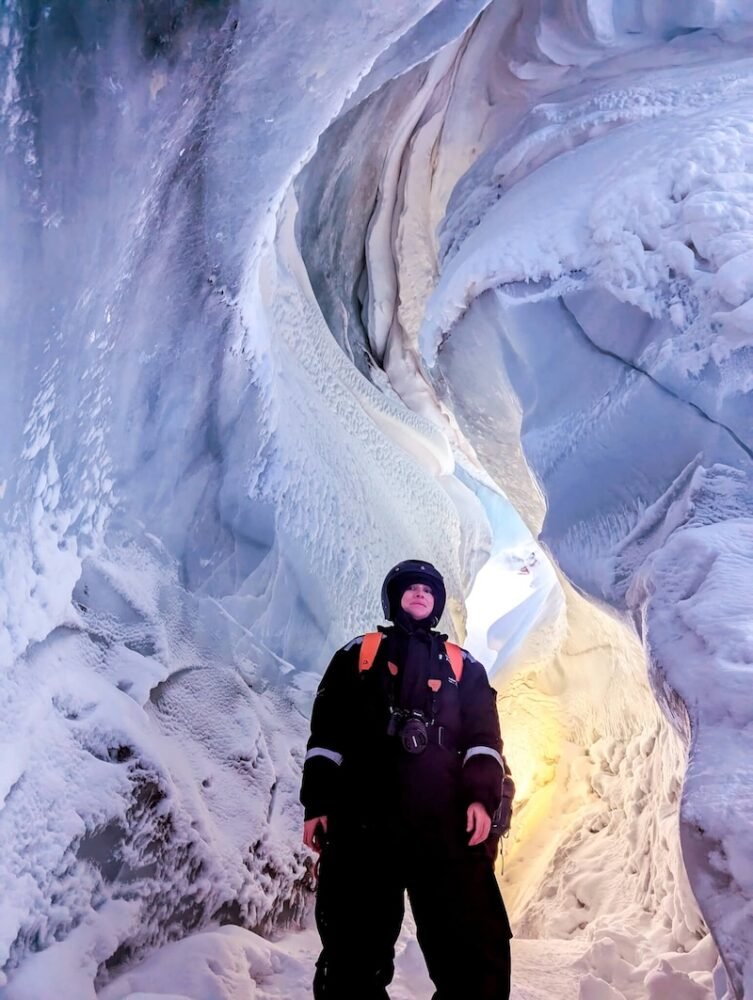
This guide to how to pack for Svalbard will go through what to wear in Svalbard for winter and summer. For the purposes of this post, I’m defining winter as October through May and summer as June through September.
This isn’t exactly a perfect definition of the seasons, since the temperatures and weather patterns can be quite volatile in Svalbard (making picking the right time to visit quite tricky!).
To clarify on how I’m defining seasons here, I’m going more by the daylight hours, since the sun sets for the final time of the year on October 4.
This marks the beginning of polar night, or as Svalbard’s tourism board is trying to rebrand it, ‘Northern lights winter’ — I guess ‘total f***ing darkness’ isn’t as catchy.).
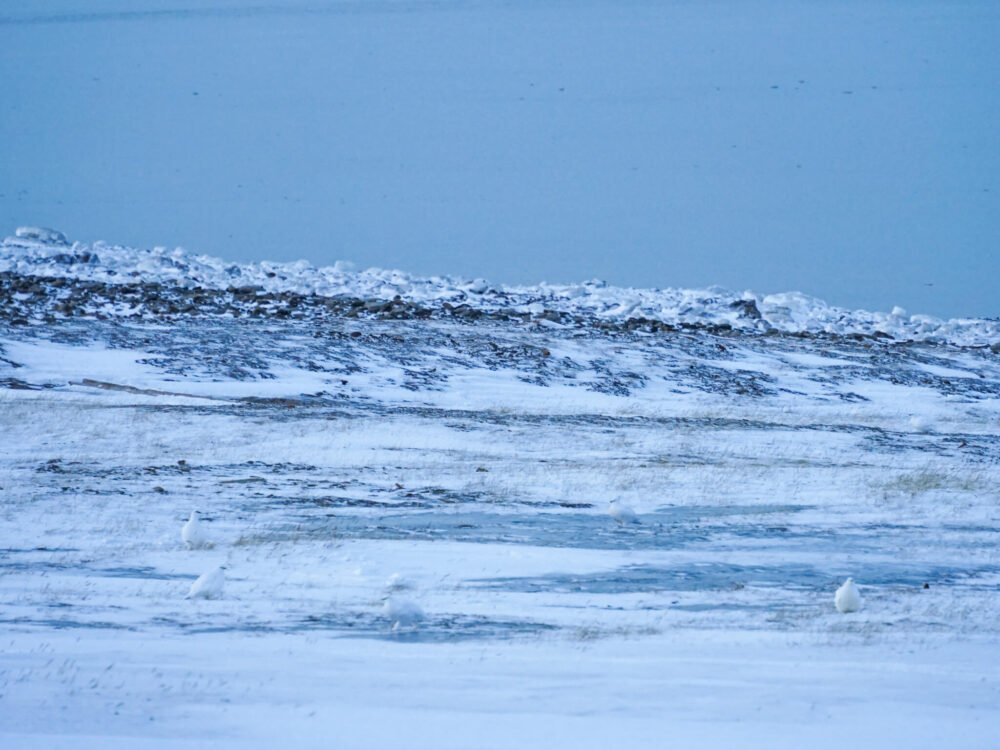
The midnight sun begins on April 20th, nearing the end of the winter season and transitioning towards summer, though keep in mind that April and even May can still be rather cold.
With a location so extreme, you may think that Svalbard is a no-go zone during the winter months. In reality, the average temperature in Svalbard is probably not as cold as you might think, and you can actually have a really enjoyable trip to Svalbard even in the colder months.
When I visited Svalbard in February, the coldest temperature we had during my 5-day, 4-night trip was -15° C (9° F) — it was cold but tolerable, especially bundled up in the right clothing (thank you, merino wool — I’m sorry I doubted you for so many years!).
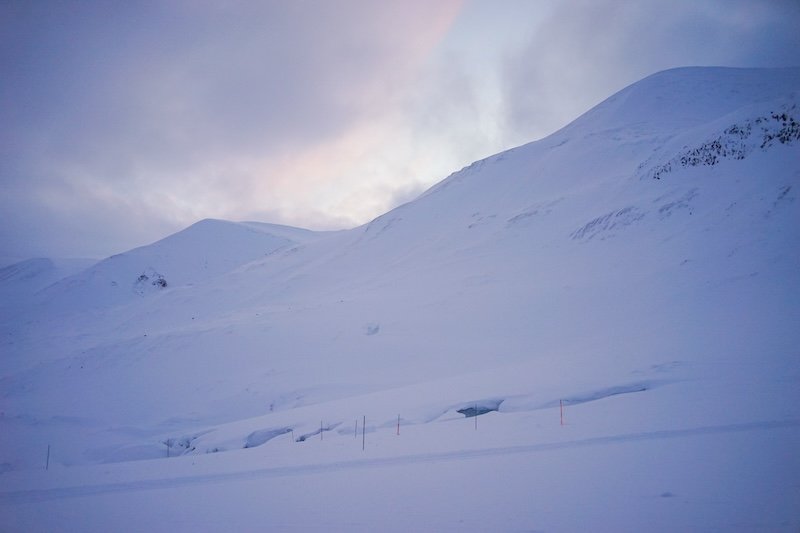
The average high temperature is -8° C (18° F) and the average low temperature is -13° C (9° F). While yes, that’s certainly cold, it’s not too far off from places I’ve lived like New York, Prague, and Sofia, which have all reached around -20° C (-5° F).
In the summer, Svalbard’s temperatures typically stay around 3 to 7 °C (37-45 °F). It can reach temperatures as high as 20 °C (70 °F) in summer from time to time.
While it’s good to prepare for unseasonably high temperatures, summer weather that warm is definitely unusual for Svalbard and not something to celebrate as it’s a pretty bad harbinger of what’s happening with the climate (the Arctic is warming four times faster than the global average).
Average Temperatures in Svalbard
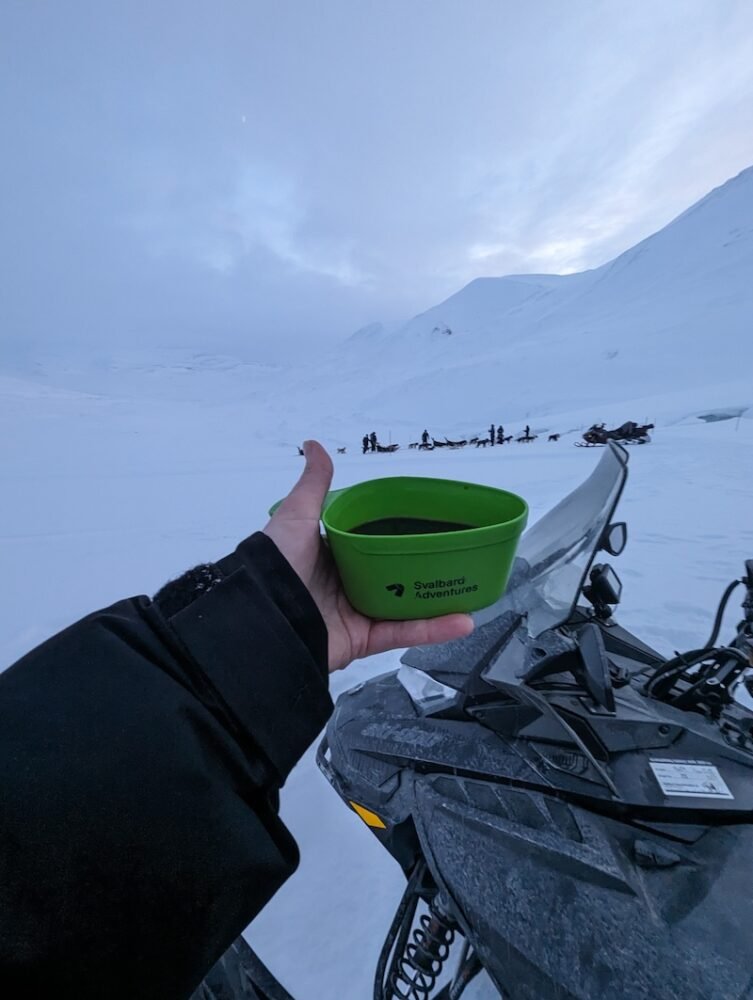
Here’s a quick list of the average temperatures in Svalbard year-round.
- January: Average highs of -5°C (23°F), average lows of -10°C (14°F)
- February: Average highs of -6°C (21°F), average lows of -11°C (12°F)
- March: Average highs of -8°C (18°F), average lows of -14°C (7°F)
- April: Average highs of -5°C (23°F), average lows of -10°C (14°F)
- May: Average highs of 1°C (34°F), average lows of -3°C (27°F)
- June: Average highs of 6°C (43°F), average lows of 3°C (38°F)
- July: Average highs of 10°C (50°F), average lows of 6°C (43°F)
- August: Average highs of 9°C (49°F), average lows of 5°C (41°F)
- September: Average highs of 5°C (41°F), average lows of 1°C (34°F)
- October: Average highs of 0°C (32°F), average lows of -4°C (25°F)
- November: Average highs of -3°C (27°F), average lows of -8°C (18°F)
- December: Average highs of -5°C (23°F), average lows of -10°C (14°F)
What to Wear in Svalbard in Winter
Warm outer layer

- Recommended items: North Face Antero parka (women), North Face Hydrenalite jacket (men)
You’ll want to have a warm parka as your outer layer for any winter trip to Svalbard. You want your outer layer to break the wind, be water resistant so that any falling snow on it won’t get you wet, and have some more insulation to keep you warm.
For the most warmth, choose a mid-thigh or preferably knee-length waterproof jacket like this North Face Antero parka for women or this North Face Hydrenalite jacket for men.
Down jackets are the most warm, but also the most expensive. They’re worth it if you plan to make many trips to Arctic environments, but you can skimp a bit on the fill material of the outer layer if you have really warm base layers.
What matters most with the outer layer is that it is fully water-resistant and windproof — insulation is also important, but that can be made up for on your other layers if you really need to save on cost.
Merino wool base layers
- Recommended items: Kari Traa Rose top and Silja bottoms (women), Helly Hansen top and matching bottoms (men)
True story — I hated wool, even merino wool, until I was introduced to Kari Traa wool base layers from my friend Megan — and since she lives in Arctic Finland, she knows a thing or two about dressing warm.
I always thought of wool as itchy, since I’m neurodivergent and have high sensory sensitivities to clothing. But Kari Traa does some beautiful sort of witchcraft that makes the wool buttery-soft and not itchy at all. I literally put aside my 30+ year long tirade against wool purely thanks to this amazing brand (not sponsored, I’m just a pro bono Kari Traa evangelist).
I have a set of the Rose long-sleeve base layer top and the Silja base layer bottoms (or something quite similar, as I can’t find my exact pattern). Be sure to look for something that is 100% merino wool, not the ones that are 60% wool, 40% modal as they won’t be warm enough for Svalbard winter.
Kari Traa doesn’t make men’s clothing — sucks for them. So for men, I’d suggest this Helly Hansen base layer top and matching Helly Hansen base layer bottoms top for your thermal underwear. These have a 2-in-1 construction with 100% merino wool on the exterior and a moisture-wicking interior layer.
Wool sweaters
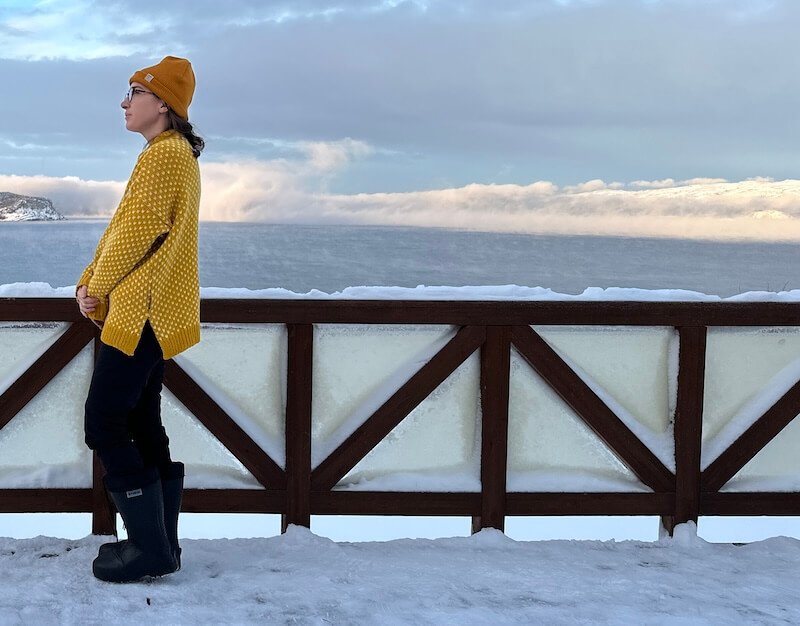
- Recommended items: Dale of Norway Falun Helon sweater (women), Dale of Norway Vail sweater (men)
A second layer of wool is essential when properly layering up — this locks in all the wool between your body, the base layer, and your outer layer, keeping you nice and toasty!
I love Norwegian brands for 100% wool sweaters, and Dale of Norway is one of the best brands you can get. I love this soft, feminine Falun Helon sweater for women; for men, I like the classic Vail sweater.
These pieces are pricy but a true Norwegian wool sweater will last you basically a lifetime (better yet, protect your clothing investment with some hanging cedar planks that prevent moths!)
Plus, you don’t need to wash your wool sweaters very often because they are anti-microbial and odor resistant. This means you can get away with bringing 1-2 sweaters, depending on how long you’ll be in Svalbard and how many choices you prefer to have.
Waterproof trousers

- Recommended items: North Face Sally snow pants (women), Columbia snow gun pants (men)
It’s remarkable just how helpful having wind-resistant, waterproof pants can be when it comes to keeping you warm in a cold climate like Svalbard’s. You don’t necessarily need heavy-duty ski pants — just something that will stop the wind in its tracks.
If you don’t have a very thick ski pant style layer, something water-resistant will do, but I’d add another layer between your base layer and your waterproof layer to really lock in the warmth.
Snow boots and wool socks
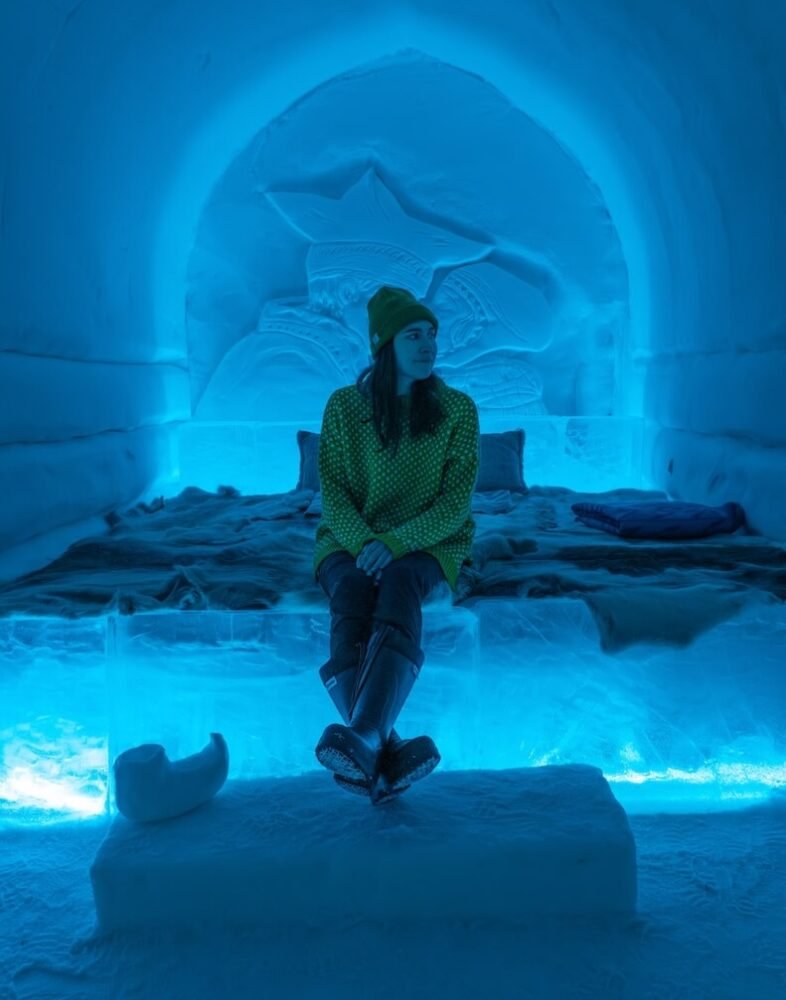
- Recommended items: Fubuki Niseko 2.0 boots (unisex)
Warm boots and wool socks are an absolute essential, easily the most important items you’ll pack on your trip to Svalbard.
Admittedly, the Fubuki snow boots I recommend are currently a little hard to track down because they’re so popular, but if you do — they’re the best snow boots you’ll ever own!
Lightweight, trendy, comfortable, warm in temperatures as low as -30 C… need I say more? Oh, they’re also trendy as can be, beloved by everyone in the Nordics as they were designed by a Swede inspired by Japanese aprés ski wear. Rubber boots don’t get any more aesthetic than that!
And of course, you’ll also need wool socks (what else?) to keep your feet toasty in your boots. That’s the most important thing when it comes to Svalbard footwear, actually!
Warm hat

- Recommended items: Helly Hensen 100% wool beanie (unisex)
You’ll absolutely need a warm hat that covers your ears when visiting Svalbard. Skip those fur trapper hats, as they don’t actually keep you as warm as they look, since they don’t really stay flat and warm against your ears.
Go for a typical beanie that covers your ears, preferably wool, and you’ll actually be way better off!
Neck gaiter
My friend gifted me a Kari Traa neck gaiter and it was the best thing to add into my winter wardrobe!
Less fussy than scarves, more comfortable than balaclavas, it’s the perfect way to keep your neck, lips, and nose warm if you pull it up!
Warm mittens (and photography gloves)
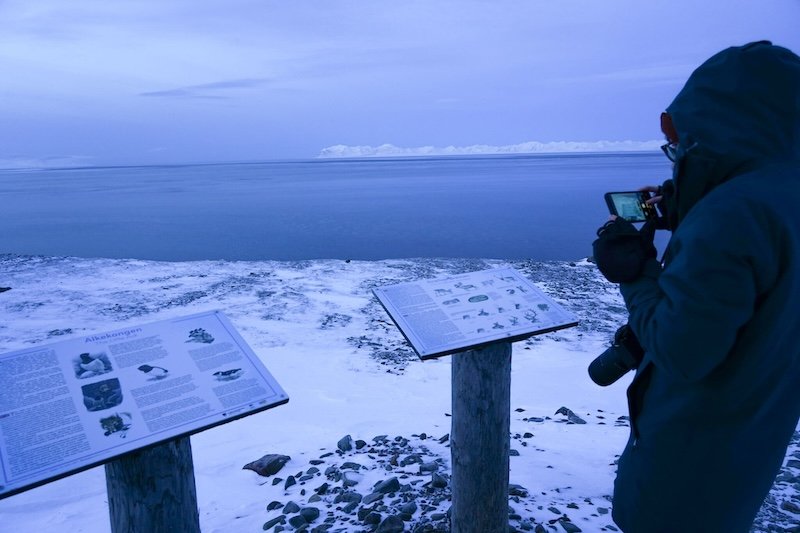
- Recommended items: Hestra Nordic knit wool mittens (unisex) or Hestra All Mountain waterproof snow sports mittens (unisex); photography gloves (unisex)
You lose so much heat through your hands and fingers, so high-quality mittens is absolutely an area where you should invest in order to make sure you enjoy your Arctic adventure and aren’t freezing too much to enjoy it. I recommend Hestra — they’re a Swedish company who literally only produce gloves and mittens, so it doesn’t get better than that level of specialization!
While if you do a snowmobiling tour or a dog-sledding tour, they’ll let you borrow really warm (and huge!) mittens, you’ll want it for other activities, like the wildlife photography tour I did, looking for the aurora borealis, or even just walking around town.
You can get a wool pair (cute!) or a waterproof pair (practical!) depending on how likely you are to get your hands wet during your activities.
If you plan to take a lot of pictures, you may want both mittens and photography gloves, which allow you to quickly remove the finger tips of the gloves to access the camera control dials.
Here’s a little insider tip: anything marketed as photography gloves are often up-charged, but you can grab a pair of ice fishing gloves that do the same thing for half the price!
Reflective vest
- Recommended items: Y-style reflective vest (unisex)
This is not technically something you must bring to Svalbard, but I would recommend it if you are staying on the outskirts of the main town during a part of the year that is still rather dark.
My hotel was along the main street in Longyearbyen so it was OK for me to go without it, as that particular road is well-lit, but if you are staying at a hotel off the main drag, you will likely want to wear one. Every local wears this Y-style reflective vest that just clips on over their winter jacket — so you’ll feel like you’re in good company!
What to Wear in Svalbard in Summer
Mid-weight outer layer
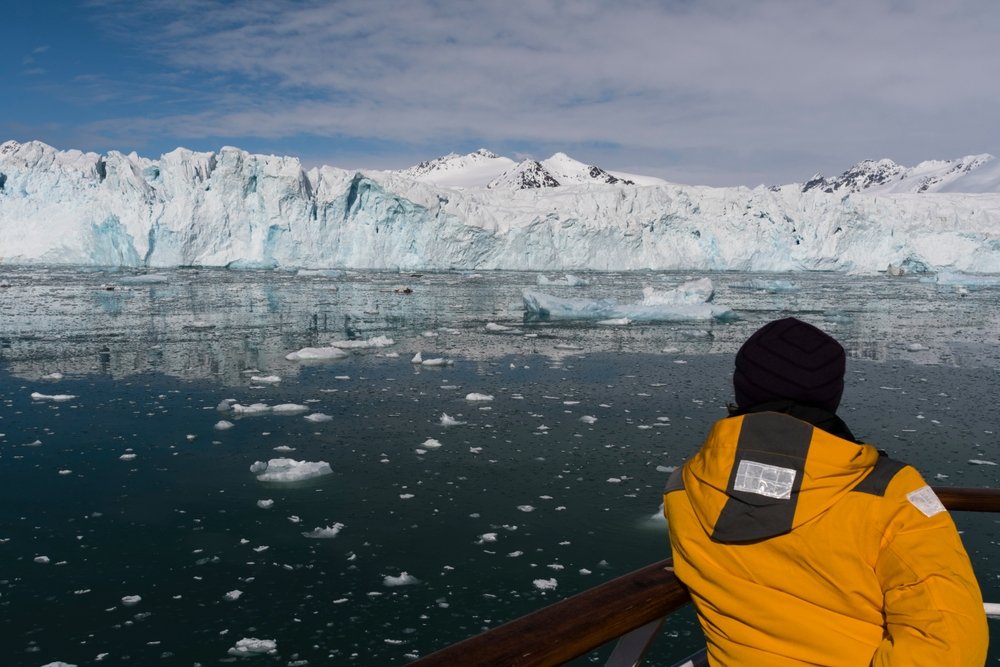
- Recommended items: Helly Hansen Aden waterproof jacket (women’s), Helly Hansen Seven waterproof jacket (men’s)
Visiting Svalbard in the summer means lots of boat trips with whipping winds — you want something strong enough to break the wind and take the bite out of it, but not overheat you at this time of year.
You won’t necessarily need a parka — though if you already have one, it might not hurt to bring it if it’s not too heavy and you prefer to be on the warmer side.
A thin layer that’s wind-resistant but warm will probably be the best choice. I always opt for Scandinavian and Nordic brands when I can when traveling in this part of world… after all, they understand their mercurial climate the best!
Helly Hansen makes some of my favorite lightweight but waterproof outerwear at affordable prices given the high quality of the garments (which should last for a decade with proper care!).
Merino wool base layers (optional, but recommended)
- Recommended items: Kari Traa Rose top and Silja bottoms (women), Helly Hansen top and matching bottoms (men)
Depending on the temperatures and how you personally react to the cold, you may or may not want to have some merino wool layers with you.
Remember, summer temperatures in Svalbard are not that high — roughly 3-7 °C (37-45 °F) — so if this is cold for you like it is for me, you’ll still probably be happy to have base layers… especially on a boat trip in a lot of wind!
As above, I recommend Kari Traa’s layers for women and Helly Hansen’s layers for men — both are good quality Norwegian clothing brands that adhere to the Nordic mentality of “no bad weather, only bad clothing.” It’s the best thing you can pack if you run cold!
A range of long sleeve layers
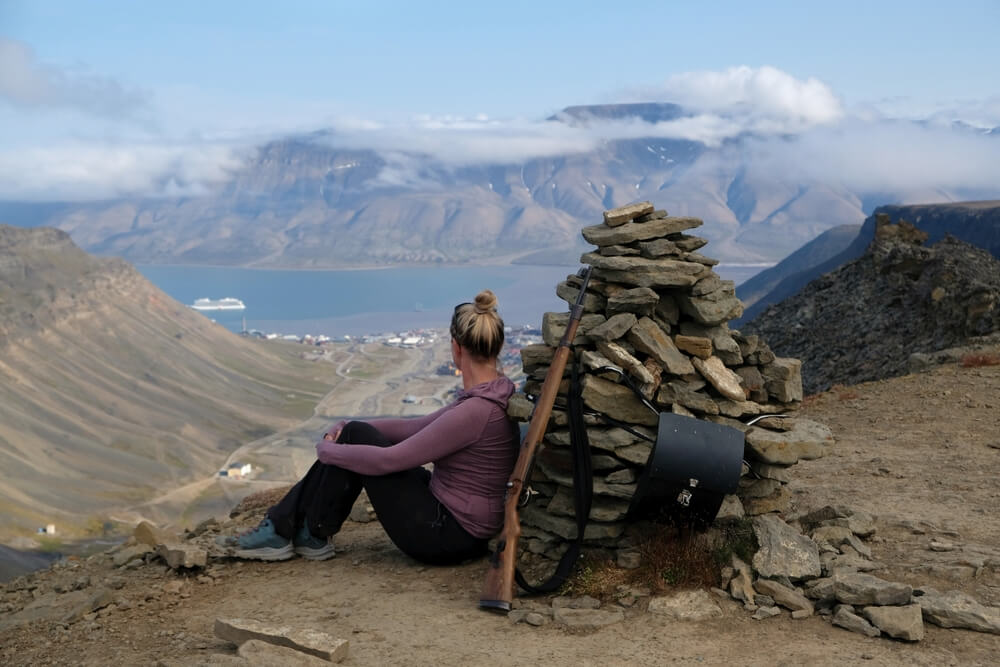
- Recommended items: 32 Degrees long-sleeve T-shirt (women’s and men’s) // Kari Traa fleece for women and Columbia fleece for men // State Cashmere 100% cashmere sweaters (women’s and men’s)
How much warmth you will need in the summer depends entirely on the weather that you’ll happen to get during your trip.
In the summer months, weather is quite unpredictable. As I wrote in the above section, average summer temperatures are pretty mild (read: cold), but higher temperatures do happen, including a record-setting 23 °C (73 °F) recently, in July 2020!
To combat this unpredictability, I suggest bringing a nice variety of long-sleeve layers. I’d bring at least two basic, lightweight long sleeve T-shirts in case it’s unseasonably warm (which can double as a sleep shirt or shirt for lounging in hotel rooms if you can’t wear it outside).
In addition to that lightweight long-sleeve, which you can substitute for a wool base layer if it’s not too cold, I’d also recommend some nice mid-weight layers like fleece jackets or lightweight wool sweaters.
With fleece, you don’t need anything fancy — you can get a great fleece jacket for under $50, easily. For fleece, I love this adorable (and affordable) Kari Traa fleece jacket for women and this classic Columbia fleece for men.
For summer wool, think alpaca, merino, or cashmere instead of heavy-knit sweaters like you’d wear in winter. For lightweight wool, I recommend the classic cashmere brand State Cashmere, which has a range of colorful, simple 100% cashmere sweaters for women and for men as well.
You’ll likely want to check the weather forecast a few days before your trip and finalize this part of your summer Svalbard packing list at the last minute and change things out if it seems like it’ll be colder or warmer than you expect.
Jeans or pants
- Recommended items: Normal denim/cotton pants from home, optional recommended rain pant like the Columbia Rebel Roamer rain pant (men’s)
In a Svalbard summer, if you’re wearing a base layer, you can probably get away with wearing just your average pair of jeans over them or a regular pair of pants that you’d typically wear in the winter back home.
It doesn’t rain too often in Svalbard — remember, Svalbard is actually an Arctic desert climate! — but with temperatures above freezing throughout most of the summer, any precipitation headed towards the Arctic island will result in rain.
A thin waterproof pant layer would be a great choice to stash in your bag just in case it rains.
Rugged boots (and hiking shoes or running shoes, if hiking)
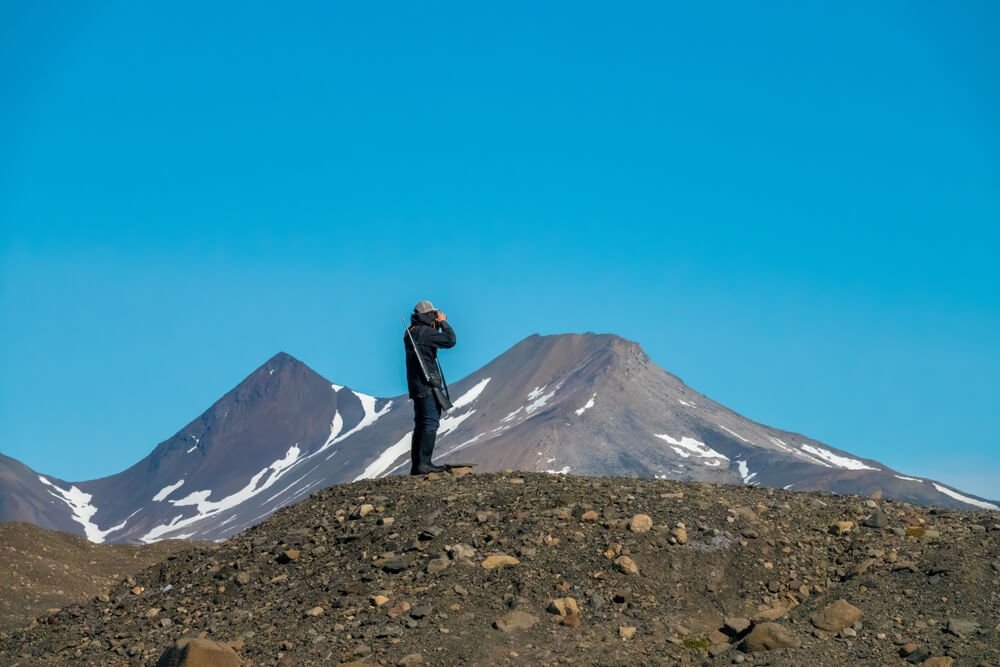
- Recommended items: HISEA Chelsea boots (women’s) (men’s version here)
Be careful with the boots you bring to Svalbard in the summer… it may be the last place you ever wear them! No, you’ll be fine — it’s your boots that I’m alluding to, here.
You’ll want warm shoes that won’t get your feet cold in the just-above-freezing temperatures… but you also don’t want to bring anything that has a fragile barrier, like patent leather. Why?
Well, once all the snow melts from the island and you’re walking around Longyearbyen in the summer, pretty much every step you take you’ll be kicking up gravel and rocky dust.
After all, Svalbard was a mining settlement for a reason — its mountains house an unfathomable amount of coal, and the mountain terrain gets weakened by snow and ice every year, knocking off fresh layers of dust and gravel.
Rather than bring a beloved pair of shoes to Svalbard and risk ruining them, I’d buy a cheap (but still useful) pair of kick-around boots, like these affordable rubber Chelsea rain boots for women or a similar option for men.
These shoes aren’t good for hiking, however, so if you want to hike in Svalbard during the summer, pack some running shoes or (better yet) hiking boots that you don’t mind getting sooty and dirty.
Pair of light gloves and hat
- Recommended items: Aegend touchscreen gloves (women’s), New Balance touchscreen gloves (men’s)
You don’t need heavy-duty gloves like you do in the summer, but with temperatures not far above freezing, your hands will still likely get cold if you’re out and about all day.
I’d recommend getting a light pair of gloves with touchscreen-friendly capabilities so you’re not always having to take them on and off. These are usually marketed as running gloves and have touchscreen capabilities!
You’ll also want to bring a hat to keep your ears warm and covered — just a normal beanie should be fine.
Other Things to Pack for Svalbard (Year-Round)
Reusable water bottle
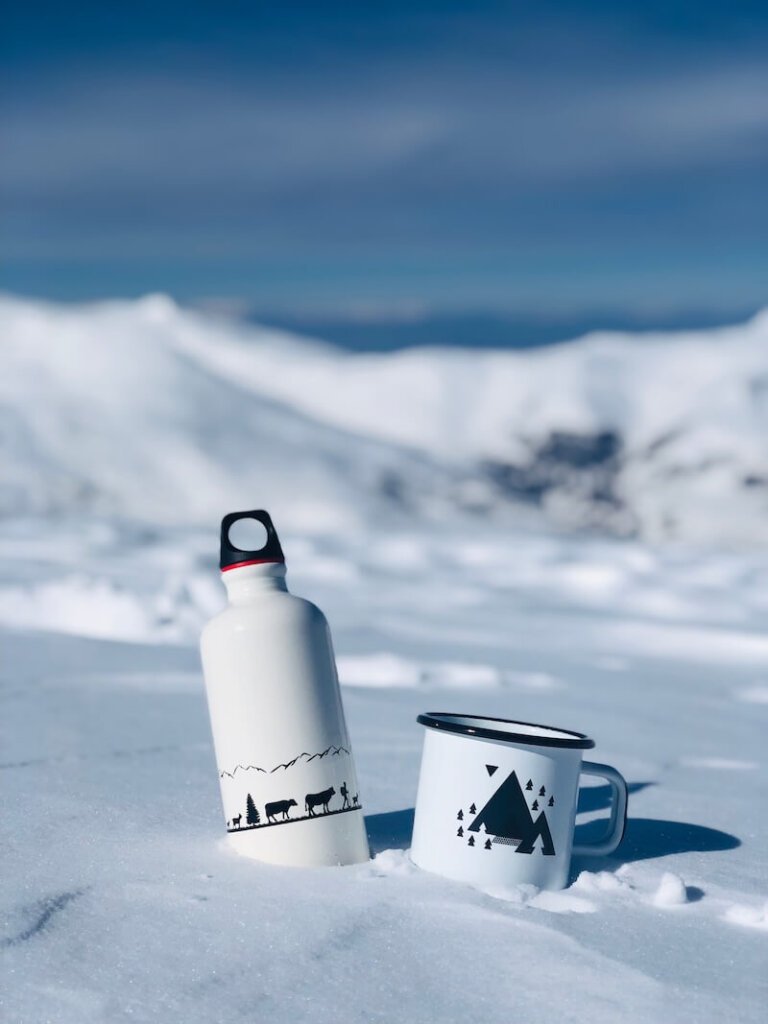
Svalbard’s water is some of the world’s best. I mean, this is the island that launched perhaps the cringiest bottled water campaign of all time, promoting their ‘eco-friendly’ glacial water (which of course, becomes decidedly un-eco-friendly when shipped to rich oligarchs all around the world, but I digress)…
While you won’t exactly be drinking glacial water from the tap in Svalbard, you will be drinking deliciously pure drinking water that comes from the pristine Isdammen reservoir, which is fed by meltwater from the snow of the surrounding mountains.
You likely already have one from home, but if you need a new one, I recommend this Hydro Flask.
Waterproof Bags
If you’re doing boat trips… or even an Arctic adventure in heavy snow… you’ll want some sort of waterproof bag to keep all your valuables dry on your trip!
I do a lot of dive trips where I spend the entire day on a boat, and I swear by Sea to Summit for their affordable, high-quality dry bags.
Small Day Pack
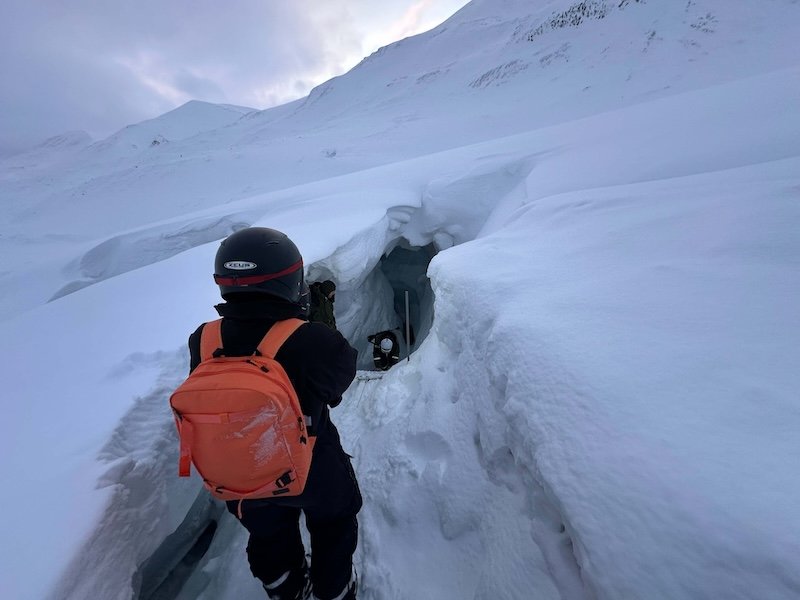
You’ll want to bring a small day pack, like this classic Fjallraven mini backpack (or any similar-sized backpack you already have at home) for packing any essential items for your day out.
Don’t make it too bulky — you want to be able to strap it easily to a snowmobile like I did on my winter tours, as well as be able to carry it comfortably while hiking and walking around.
Lip Balm and Moisturizer
Svalbard is an Arctic desert, which means it is dry, dry, dry! I never had drier hands (especially my cuticles) and drier skin than when I visited Svalbard!
A high-quality moisturizer like this one from Peter Thomas Roth with loads of hyaluronic acid will keep you super moisturized, even in Svalbard. It’s quite pricy but worth it.
If you want a cheaper option, this Paula’s Choice moisturizer is about half the price and uses similar active ingredients.
And don’t even get me started on how chapped my lips got! Aquaphor is my gold standard for hydrating my lips during the winter, and it’s super cheap.
Battery Pack and Extra Camera Batteries
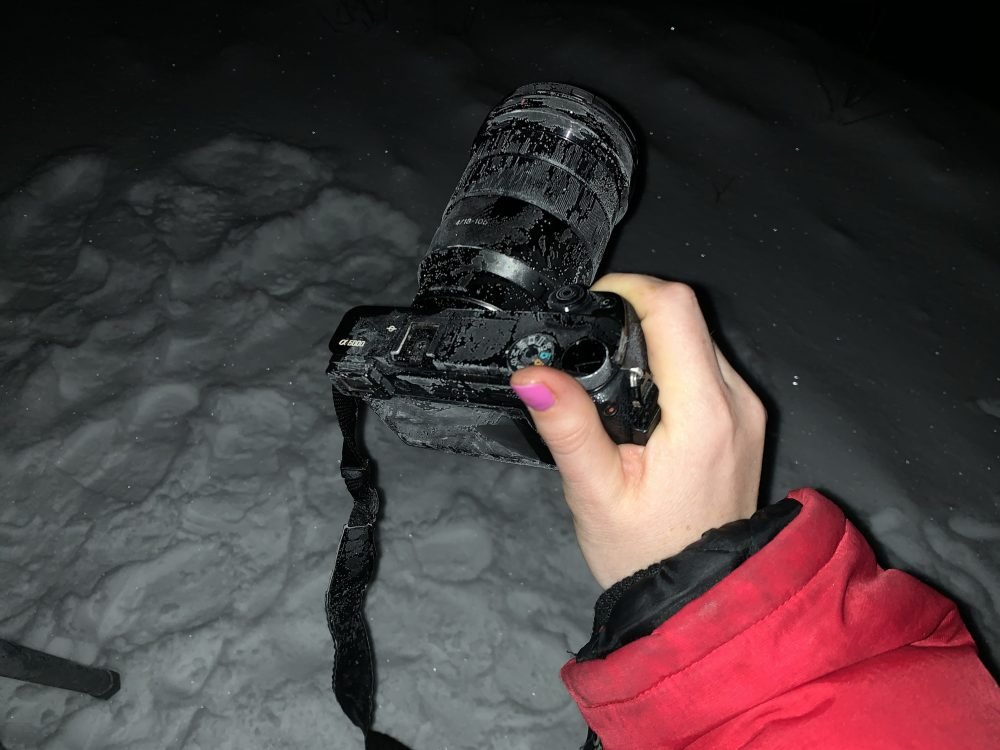
You will never use up your batteries faster than when you’re in Svalbard! Between snapping all the photos and videos on your phone and the quick battery loss that happens at extreme temperatures, it all goes quickly.
This Anker battery pack is super useful, since it charges quickly and holds a ton of juice — about 2 charges worth.
Just remember that it only uses USB-C, so if you have an older iPhone (anything below iPhone 15) you’ll also need a Lightning cable adapter.
Rechargeable hand warmers
If you’re going to be out in the cold a lot, especially if you are taking pictures and can’t always wear your thick mittens, rechargeable hand warmers can make a world of difference.
We used them during our winter photography tour and I’m low-key convinced it’s the reason I still have fingers.
Sunscreen
OK, I guess you can leave sunscreen behind if you’re visiting during the polar night….
But any other time of year, even though it’s cold out and you’re pretty far away from the sun’s rays in the polar regions compared to the equator, you should still bring sun cream, especially if there’s still snow on the ground, which can reflect the sun’s rays and increase your chance of sunburn.
I recommend Supergoop sunscreen since it goes on so smoothly!
Binoculars
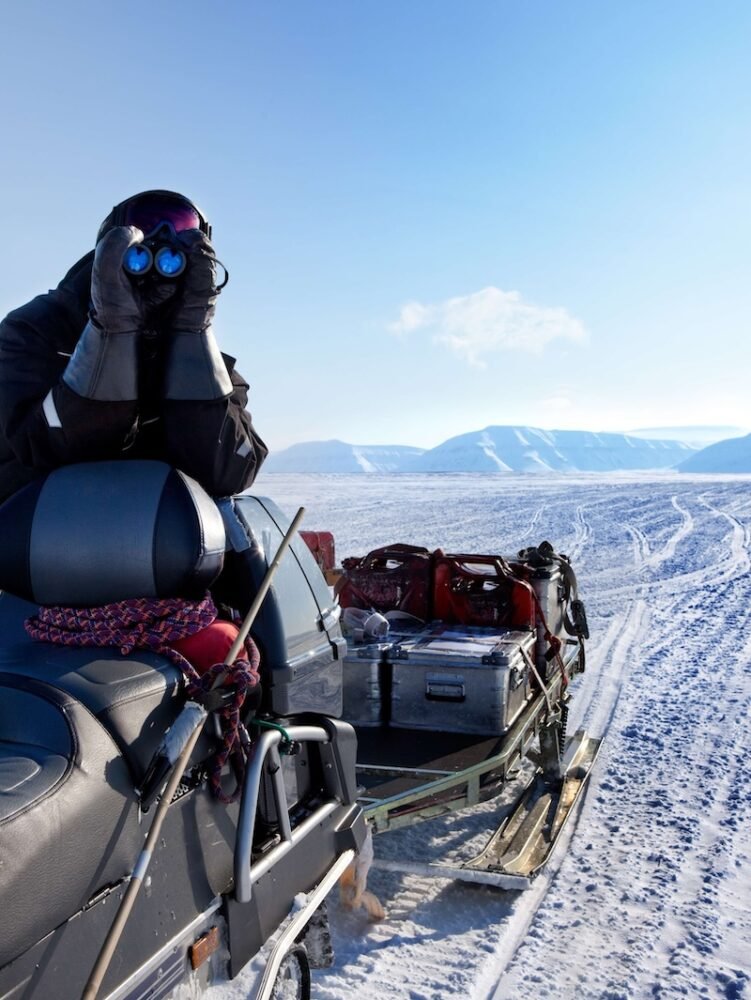
You absolutely want a good pair of binoculars while in Svalbard!
Whether it’s trying to spot an Arctic fox in the winter, being teased by its mocking laugh, or you’re on a boat in the summer and want to zoom in on walruses and details of the glacier and sea ice, there’s so much you can see in Svalbard that you can’t get very close to. And that’s not even mentioning all the birding you can do in Svalbard in summer!
If you want to splurge on a top-of-the-line brand, I recommend these ZEISS Terra binoculars — ZEISS is beloved in the photography world for making some of the best lenses in the world. They’re not cheap (nor are they exorbitantly expensive like some other options, like Swarovski), but they will last you a lifetime if you care for them properly and ensure the glass doesn’t get scratched.
For a more affordable but still good quality pair, I recommend these Steiner Safari binoculars, which are beloved by birders and even trusted by many country’s militaries (so it’s probably good enough for your wildlife-spotting needs).
Allison Green is a former teacher who has been travel blogging since 2016. She has a Masters in Teaching and a B.A. in English and Creative Writing. Her blog posts merge her background as an educator with her experience traveling to 70+ countries to encourage ethical, meaningful travel. She has been a speaker at the World Travel Writers Conference and her writing, photography, and podcasting work has appeared in National Geographic, CNN Arabic, CBC Canada, and Forbes, amongst others. Now a full-time traveler, she has lived in Prague, Sofia, New York City, and the San Francisco Bay Area.